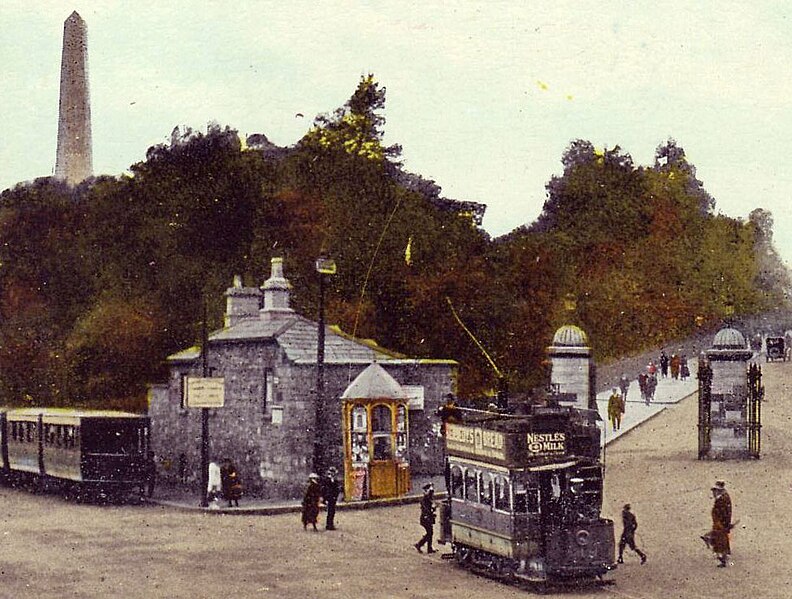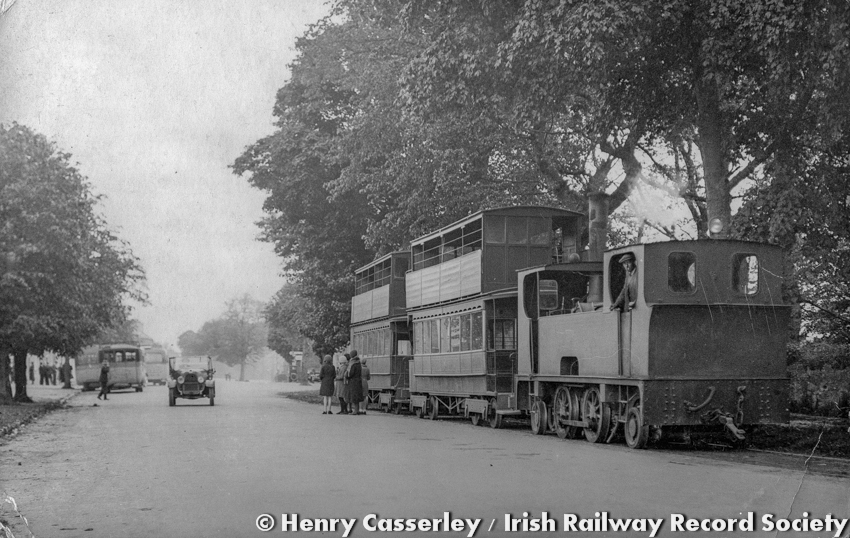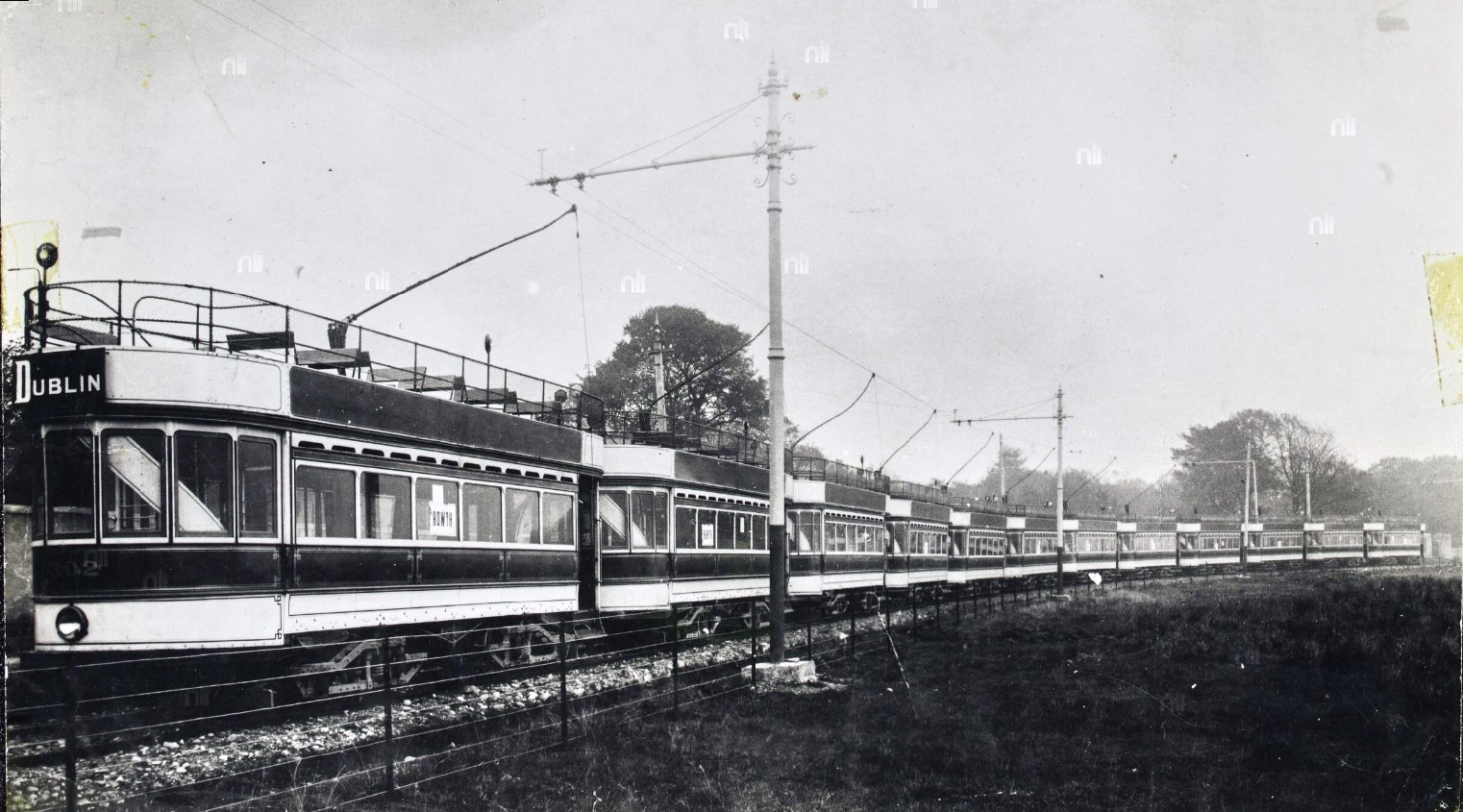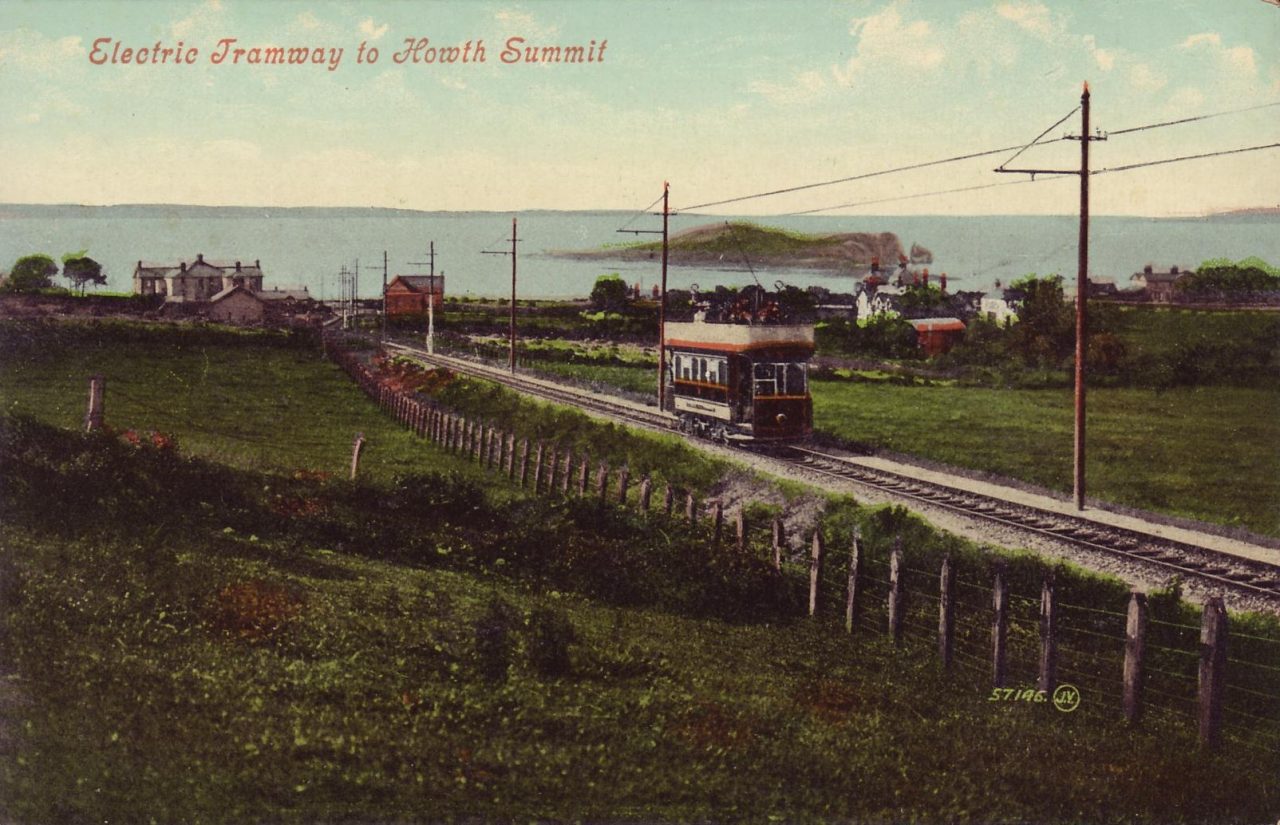This is an addendum to a three part series about the first Dublin tram network. Follow the links to read Part 1, Part 2, and Part 3.
The Three Independents
While the Dublin trams were being consolidated into one company, it didn’t quite stop independent companies from setting up their own routes. Three of these are worth mentioning:
The Dublin & Lucan Steam Tramway Co.
Founded in 1881, this company ran a steam tram that started from the gates of Phoenix Park and then ran west. When opened, the line terminated in Chapelizod and later that year in Palmerstown. Eventually it reached the Spa Hotel in Lucan in 1883. In 1890 an extension to Leixlip opened up, but any other planned extensions to Celbridge and other places never came to anything. The Leixlip extension didn’t last very long either and it closed down in 1897.

The company electrified and re-laid the track to a wider gauge in 1900. This gauge was deliberately incompatible with the gauge used by DUTC because the company was worried they would be taken over by them. But despite that, the line was never a big success, probably because it didn’t run through to the city. In 1925 the company declared bankruptcy and the DUTC was saddled up with its assets in 1927 as part of the conditions attached to the renewal of its franchise to operate trams in the city. It re-laid the tracks to their standard gauge and connected it to the existing Parkgate Street line, but cut the route on the Lucan side to stop at the east end of the village instead of the hotel. The line was never profitable for DUTC either and they eventually closed it in 1941. You can still see the legacy of this route in the streetlights along the south of Phoenix park between Islandbridge and Chapelizod. The ones that were used for the overhead wires for the tram are very distinctive with very long arms and decorative metalwork at the top of the post.
The Dublin and Blessington Steam Tramway
This was a mixed goods, mail, and passenger line which opened in 1888 and ran from Terenure to Blessington. In Terenure it connected to the, then horse drawn, trams to the city centre. An extension to Poulaphouca was opened in 1895, mostly for the tourist traffic. The old ticket office there is still visible just before crossing the bridge going south, and a sign for the bus stop that replaced the tram is still hanging on the wall.
The areas it served were sparsely populated and it depended heavily on the transport of goods and tourism for profits. Plans to electrify parts of the track came to nothing due to the outbreak of World War I and the continuous low profit margins meant its stock gradually deteriorated. The final nail in the coffin was a new bus service from Dublin city centre to Blessington that opened up in 1929. Passengers no longer had to change trams in Terenure, and the new busses were more comfortable than the old carriages in use on the lines. In its final years it did add a few more cost effective petrol-engined railcars, but that couldn’t save the line. Talks with DUTC and Great Southern Railways to take over operation of the line failed. The extension to Poulaphouca was closed in 1927, and the rest of the line in January 1933.

The Clontarf & Hill of Howth Tramroad Co.
This company was founded in 1894 and had the goal to run a tram from Dollymount to Howth, extending the existing route from DUTC. The company had close ties to the DUTC chairman William Martin Murphy, and in 1907 the DUTC took over the entire operation and maintenance of the line.
Discussions and proposal changes slowed the project down for a number of years, but eventually it was decided that the route would run from Dollymount along the coast, and then along the north of the peninsula to Howth Harbour. Despite what the name suggests, it did not run to the Summit. The main obstacle for the final route was the stretch around St Anne’s Park where Lord Ardilaun, the Guinness heir, owned the land all the way to the coast. After giving in to almost all his demands, including the condition that there would be no stop along that stretch of the route, Work was completed in 1900 and on the 26th of July the line opened to the public.

The company ran 12 large, open topped cars with 74 seats on the route and had three classes. After the DUTC took over, the route was merged with their Nelson’s Column to Dollymount route, and you could make the trip from the city centre to Howth in about 45 minutes for the price of 2 shilling and 6 pence. in 1918 received the route number 31, which is used to this day for the bus to Howth.
The line was profitable until the 1930s, after which competing bus lines and increasing private car ownership slowly drove it out of business. The last tram ran on the 21st of March 1941 and its remaining rolling stock was moved to the Dalkey line.
The “other” Howth Tram Line
As well as the independent company C&HoHTCo, the Great Northern Railway Co. also ran a tram in Howth. This was a circular route which ran from Sutton to Howth Summit along the southern part of Howth, coming back down the hill to Howth village roughly where today’s DART station, and then back to Sutton. The route opened in 1901 and it ended up being the last of the old tram routes to close down. The last tram to operate in public service in Ireland was the number 9 who made its final trip on the 31st of May 1959, one year after being taken over by C.I.E.
This number nine tram can be seen in the National Transport Museum in Howth where it has been lovely restored by a team of volunteers.

